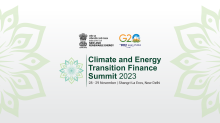Climate and Energy Transition Finance Programme (CETFi)
Background
The Green Hydrogen Organisation is spearheading a comprehensive “Blended Finance Outreach and Advocacy” initiative centred around a detailed Library of Financial Structures, Facilities, Instruments, Incentives, Grants and Subsidies and enabling tools. This work is an extension and part of the Green Hydrogen organisation’s work to promote large scale financing for the sustainable development of Green Hydrogen economy, enabling decarbonisation and Energy Transition.
The development of the library of tools and structures has been based on first-principles approach to risk management. Numerous risks emerge across the value chain, including market, technology, construction, operational, financing which are further impacted by systemic risks such as political, geo-political and global macro-risks. Whilst the categories of risks will be the same across every market, the intensity/complexity of each risk-class will vary from country to country and across different segments within each country.
The programme therefore takes an “applied finance” approach to first create a comprehensive knowledge base comprising of various structures and financial instruments and then applying it to various markets and its segments for developing a green-hydrogen financing framework. The programme’s thrust is on various developing and emerging market economies, collectively referred to as the Global South. Many of the recommendations set will be based on “blended finance” models that will help expand the pool of financing for green hydrogen ecosystem.
The programme’s significant output shall be in form of a paper titled: “Approaches to finance India’s GH2 economy and Energy Transition using Blended Finance and Innovative Instruments”. This will identify and assesses all the value-chain and systemic risks while providing strategies to mitigate them, ensuring the successful financing of green hydrogen projects.
The paper will also recommend implementable “Blended Finance” structures that will help in:
- Identifying sources of finance that otherwise may not be available
- Recycling or unlocking capital (for redeployment) that is otherwise tied to long project cycles
- Reducing the cost of capital for projects using innovative approaches and thereby reducing the cost of green hydrogen
- Reducing times to reach FID and financial closure of projects
- Expanding the universe of capital using leverage effect
- Enable Governments and financial institutions to collaborate on creating financing structures
Contacts
For more details please contact:
Sanmit Ahuja – Sr. Advisor – Finance and Strategic Projects (sanmit.ahuja@gh2.org)
Nishaanth Balashanmugam – Country Manager – India (nish.bala@gh2.org)

